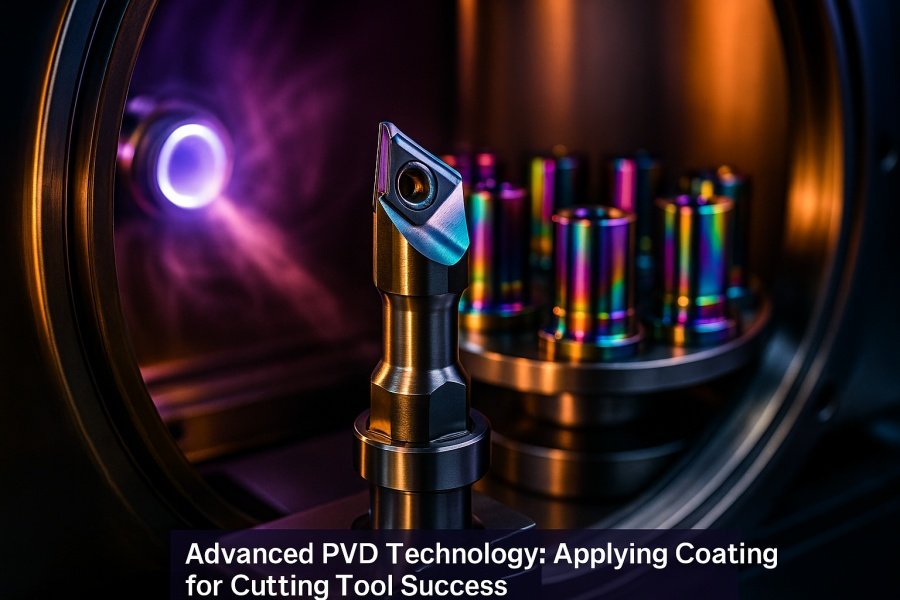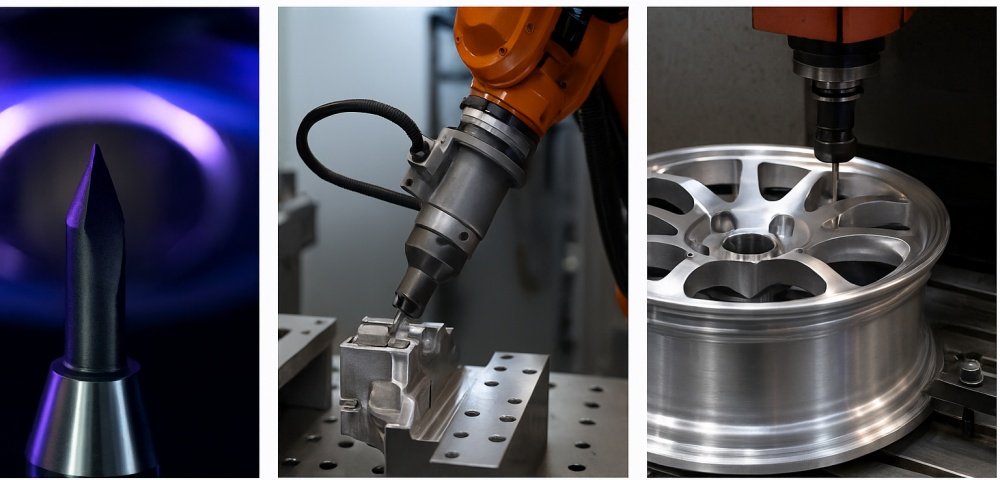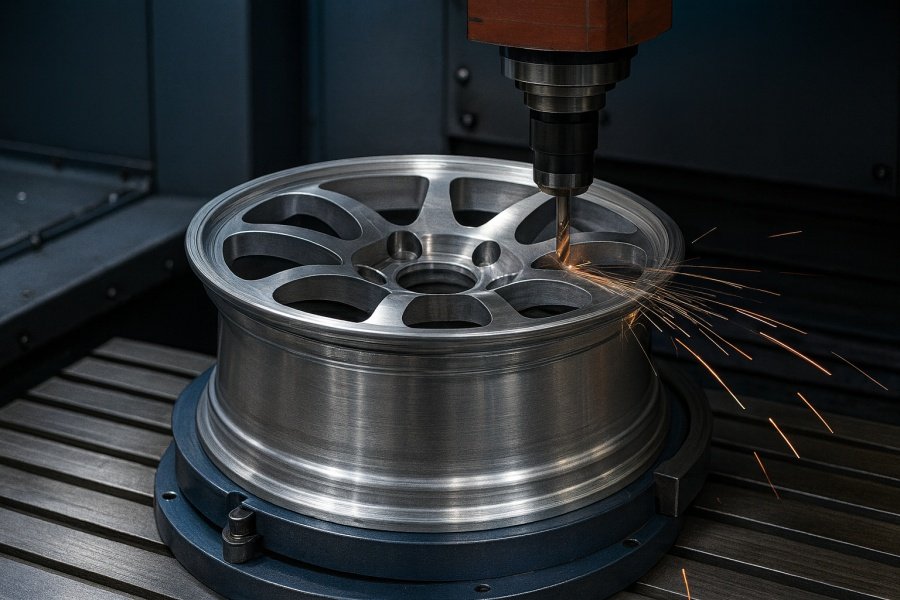Table of Contents
In the world of precision manufacturing, the difference between an adequate part and an exceptional part is often found not in the machine itself, but in the micro-details of the process. Efficiency and quality are frequently dictated by two critical, often overlooked steps: the initial preparation of the cutting edge and the final refinement of the finished component.
Understanding how to leverage advanced coating for cutting tool technology and implement effective strategies for deburring parts is essential for any high-standards manufacturing operation. These steps collectively minimize downtime, maximize material removal rates, and ensure the part meets stringent performance requirements.
The Foundation of Efficiency: Advanced Coating for Cutting Tool
The cutting tool is the heart of the CNC process. Its lifespan and performance directly influence cycle time, surface finish, and cost per part. Raw carbide or HSS (High-Speed Steel) is often insufficient for modern high-speed milling and turning, especially with demanding materials like tool steel or titanium.
This is where specialized coating for cutting tool technology provides a transformative advantage. These thin, multi-layered films—typically applied through Physical Vapor Deposition (PVD) or Chemical Vapor Deposition (CVD)—act as a protective shield, drastically improving tool life and material capabilities.

Key Benefits of Optimized Tool Coatings:
- Thermal Barrier: Coatings like AlTiN (Aluminum Titanium Nitride) form an aluminum oxide layer at high temperatures, which insulates the substrate and allows for much higher cutting speeds without premature tool failure. This is critical when machining hard or exotic alloys.
- Reduced Friction: Low-friction coatings minimize chip welding (material sticking to the cutting edge) and reduce the cutting forces required. This leads to cleaner cuts and a superior surface finish, particularly important when machining soft, gummy materials.
- Increased Hardness: The coating dramatically increases the surface hardness of the cutting tool, providing superior resistance against abrasion, which is common when machining abrasive materials like cast iron or some powdered metals.
Selecting the right coating—whether it’s TiN for general steel and non-ferrous, or AlTiN for high-heat, high-speed applications—is a calculated decision that directly impacts the bottom line and the achievable quality of the component.
The Unavoidable Step: Mastering the Art of Deburring Parts
Every time a cutting tool shears, mills, or drills material, a burr is created. This small, sharp ridge of displaced metal is universally detrimental to the final part, causing:
- Assembly Issues: Burrs prevent parts from mating correctly, leading to incorrect tolerances.
- Safety Hazards: They pose risks during handling and assembly.
- Component Failure: Burrs can detach during use, contaminating lubricants and potentially causing catastrophic failure in sensitive assemblies like bearings or hydraulic systems.
Therefore, the systematic process of deburring parts is not an option; it is a fundamental requirement of precision manufacturing.
Advanced Deburring Methodologies:
- Automated CNC Chamfering: Using the CNC machine itself with specialized tooling to break sharp edges and remove large burrs before the part leaves the machine.
- Thermal Deburring (TEM): Using a controlled explosion of gas to instantaneously vaporize burrs on internal and external surfaces simultaneously. This is highly effective for complex geometries and internal cross-holes that are difficult to reach mechanically.
- Vibratory Finishing: Mass finishing techniques (tumbling) using abrasive media to uniformly smooth edges. Ideal for high volumes of smaller components.
Effective deburring is the essential cleanup step that validates the accuracy of the preceding CNC operations, ensuring dimensional integrity and functionality.

Synergy in the Workflow: Preparing Surfaces for Downstream Processes
Optimizing the machining process extends to preparing the component for its next phase, whether that is welding, finishing, or assembly. CNC precision plays a dual role here:
1. Pre-Weld Preparation: The Art of Beveling
Welding often requires a specific joint geometry, or “prep,” to ensure full penetration and strength. Keywords like beveling in welding or beveling welding refer to the process of creating a V, U, or J groove along the joint edge.
Traditionally, this was a manual or semi-manual process. Today, high-precision CNC machining is used to execute these bevels with millimeter-perfect accuracy, ensuring the consistency needed for automated welding systems. The CNC approach eliminates human error, provides uniform root faces, and guarantees the structural integrity of the welded assembly.
2. Surface Finishing and Modification
Sometimes, a component requires machining after it has undergone a prior finishing process. For instance, if a part needs resurfacing, a shop might need to address how to remove chrome from metal before the re-machining begins. Chrome plating is extremely hard and abrasive; attempting to cut through it without specialized knowledge will quickly destroy tooling. The necessary chemical or mechanical stripping process is an integral part of the overall component preparation strategy, demonstrating the full-service capabilities of a high-end facility.
Specialized Applications: Precision in Custom Components
The mastery of materials and processes culminates in specialized services for high-value components. Consider the demands of the automotive industry. Precision is non-negotiable for components like wheels.
Custom CNC wheels and wheel center bore machining near me (reflecting a need for specialized service for critical rotating components) rely entirely on the integrity of the machining process:
- Balance and Runout: Precise coating for cutting tool usage ensures a micro-smooth finish on the bore, crucial for maintaining balance at high speeds.
- Safety: The deburring parts process must be flawless to eliminate any potential stress risers that could compromise the wheel’s structural integrity under load.
- Geometry: Accurate beveling (for structural welds) and precise bore machining ensure perfect fitment and safety.

Quality Through Comprehensive Process Control
The journey of a precision component is not complete when the spindle stops; it concludes only after every detail, from the molecular layer of a coating for cutting tool to the final deburring parts stage, has been rigorously controlled.
A comprehensive approach—one that integrates precision beveling in welding, specialized surface preparation like knowing how to remove chrome from metal, and applying these skills to complex parts like custom CNC wheels—is the standard for world-class manufacturing. This mastery of the end-to-end process is what transforms raw material into reliable, high-performing components.
💬 Ready to discuss your CNC project?
Fill out the form below and our engineering team will get back to you within 24 hours.
